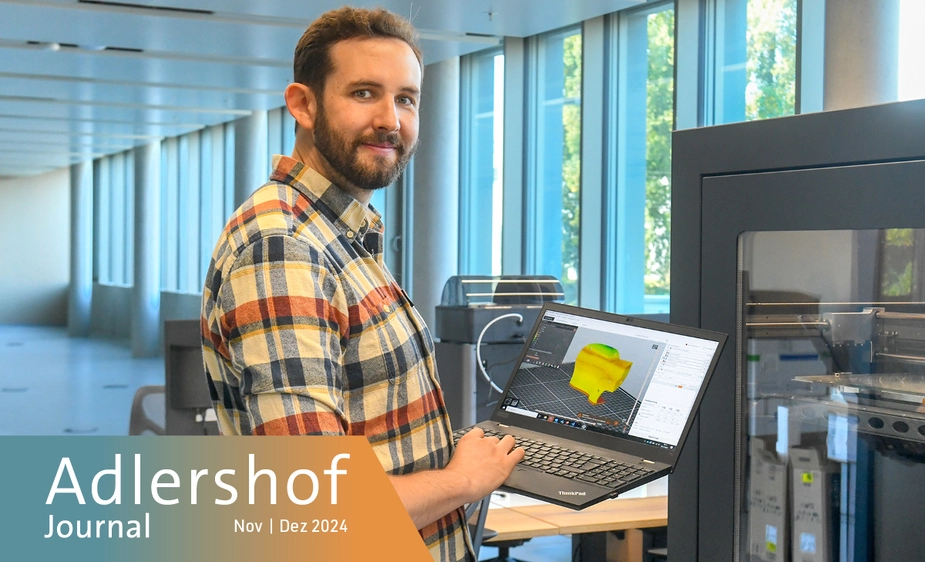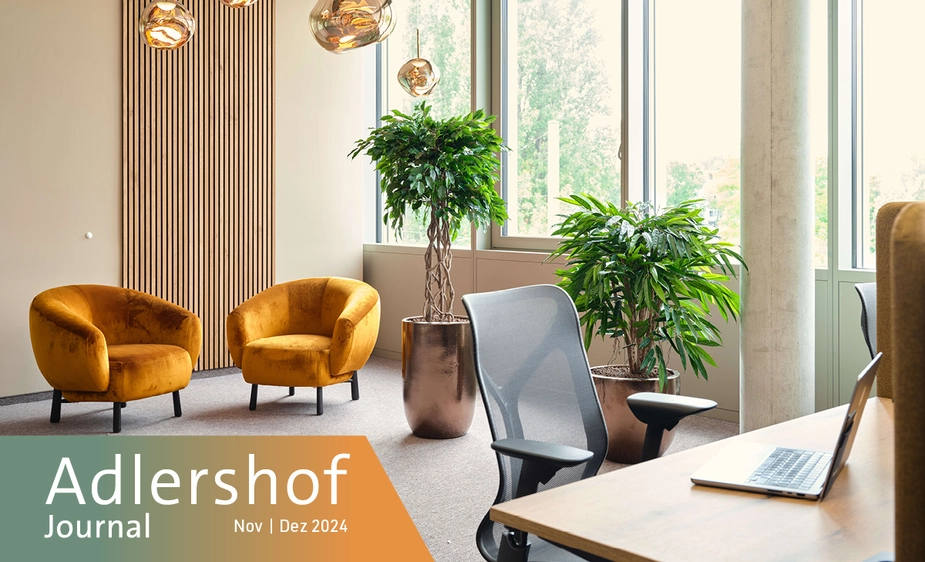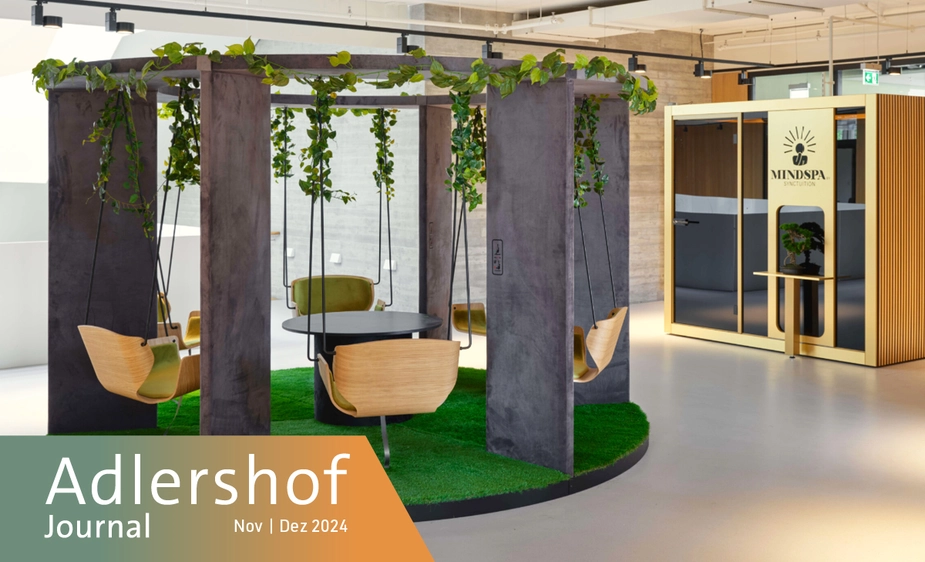New energy, new connections
Introducing an innovative world of work, ST3AM is now opening on the Adlershof campus
Wealthy regions offer talent, technology—research, development, and academia—, tolerance—communities that practice openness and diversity—, and land available for development. This is complemented by other ecological and cultural institutions. Jointly, these four advantages impact the attractiveness and improve the quality of a place, which, according to the American economist Richard Florida, who first postulated the economic theory of the creative class, is a factor closely connected to attracting and retaining talent.
“Inspiring work environments give way to unusual ideas. This makes it possible to create meaningful things and achieve outstanding results,” says Romy Sanne of WISTA Management GmbH. “Especially for tackling urgent issues like the climate crisis, sustainability, and resource scarcity. These are questions that also resonate with young talent. They are a key target group of Adlershof’s new worlds of work. With its 2,200 square meters and five distinct workspaces, ST3AM aims to go beyond the well-known models of classic, collaborative work.
“When it comes to the future of work,” flexibility is the key term, says Marina Salmon of WISTA, who coordinates ST3AM with Sanne. Flexibility not only increases employee satisfaction but also productivity. Technology plays a pivotal role here—and this is where Graham Thorn comes into play. Strengthening the ST3AM team with his expertise in 3D printing, Thorn, who is head of the makerspace, brings experience in creating models and prototypes for design companies with him. “3D printers can do incredible things nowadays, working with metal, plastic, or even clay,” he says. “Solving problems” is how the British-born expert describes his main mission, along with “finding the best 3D tech for the goals of our tenants.” Thorn is excited about his new role, noting that he has not encountered anything like Adlershof or ST3AM back in England.
At ST3AM, the traditional view of productivity, focused on hours and presence, is replaced with outcome-oriented models. What matters is what gets done, not how long one stays in the office. Digital tools make collaboration smoother and more efficient. AI and automation take on repetitive tasks so that employees can focus on creative and strategic work. “Tenant well-being is also central to us at ST3AM,” Salmon explains.
Important factors here are flexible work hours, relaxation programmes, and taking breaks in accordance with one’s own needs. Companies increasingly value diversity and are committed to an inclusive culture. In addition to eco-friendly offices, this encompasses fair work conditions and ethical business practices. “Anyone wanting to work here needs to know that tolerance, openness, and respect are core values—and rental prerequisites for us,” Sanne adds.
“The focus of working is shifting from routine tasks to problem-solving activities that require a creative approach,” says Salmon. “Moreover, exchange and communication are becoming the primary work mode. New energy forms new connections.”
Even in the era of Meta Cities and digital connectivity, Richard Florida points out, the need for face-to-face interaction is stronger than ever. Paradoxically, the more technology enables us to live and work separate from each other, the more we crave connection. It could be argued that the core function of such spaces is shifting from organising companies to organising talent.
Rico Bigelmann for Adlershof Journal
ST3AM Working Environments - Real Estate - WISTA Management GmbH



